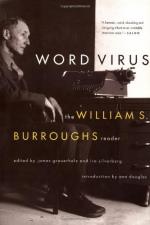|
This section contains 8,525 words (approx. 29 pages at 300 words per page) |

|
SOURCE: "Narrative after Deconstruction: Structure and the Negative Poetics of William S. Burroughs's Cities of the Red Night," in Style, Vol. 29, No. 1, Spring, 1995, pp. 36-57.
[In the following essay, Punday analyzes the meaning of the narrative structure of Cities of the Red Night based on linguist A. J. Greimas' theoretical construction of the semiotic square.]
William Burroughs's recent writing poses problems for critics. Traditionally Burroughs is known for a negative poetics that assaults the word and all continuity for the sake of breaking down social controls. His recent writing attempts to balance this negative poetics with a narrative continuity previously foreign to his writing. Burroughs remarked in a recent interview, for example, "I don't think there's any substitute for [narrative structure]. I mean—people want some sort of story in there. Otherwise they don't read it. What are they going to read? That's the point." This shift towards...
|
This section contains 8,525 words (approx. 29 pages at 300 words per page) |

|


